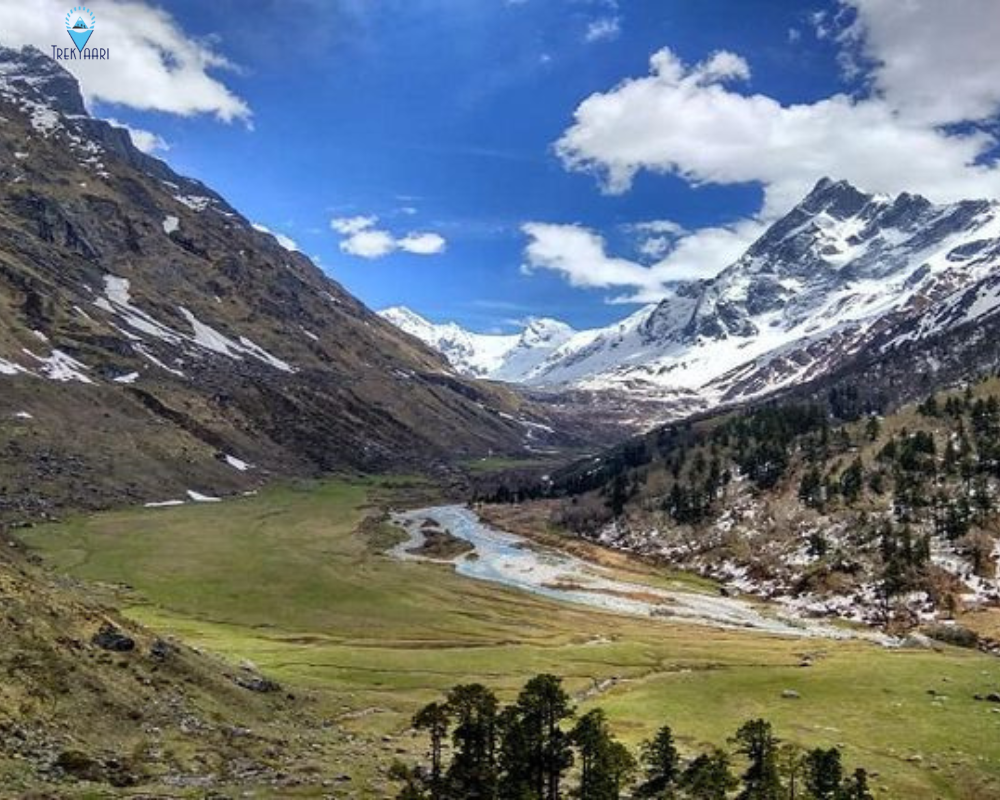The Har Ki Dun Trek is a breathtaking journey through the stunning landscapes of the Garhwal Himalayas in India. Known for its panoramic views, vibrant flora, and rich cultural heritage, this trek offers an experience like no other. However, to make the most of this adventure, having the right gear is essential. In this guide, we'll explore the must-have gear for the Har Ki Dun Trek, ensuring you're well-prepared for every aspect of the journey.
The Essential Backpack
Your backpack is your best friend on the trek, so it’s crucial to choose one that’s both comfortable and functional. For the Har Ki Dun Trek, a 50-60 liter backpack should suffice. Look for a pack with multiple compartments, padded shoulder straps, and a waist belt for even weight distribution. A rain cover is also a must, given the unpredictable weather conditions.
Footwear: Trekking Boots and Gaiters
Your feet will carry you through the entire trek, making proper footwear one of the most critical aspects of your gear. Invest in high-quality, waterproof trekking boots with good ankle support. Break them in before the trek to avoid blisters. Pair them with gaiters to avoid mud, snow, and debris, especially when trekking through snow-covered paths.
The Har Ki Dun Trek Itinerary and Map
Having a printed copy of the Har Ki Dun Trek itinerary and a map of the area is crucial. While your guide will lead the way, having your own reference is always good. This helps stay on track and allows you to appreciate and understand the route, key points of interest, and altitude changes.
Layering Essentials: Base Layer, Insulating Layer, and Shell Layer
The weather in the Himalayas can be unpredictable, with temperatures dropping significantly at higher altitudes. Layering is key to staying warm and comfortable.
-
Base Layer: Start with a moisture-wicking base layer to keep sweat away from your skin. Merino wool or synthetic materials work best.
-
Insulating Layer: A fleece or down jacket serves as an insulating layer to trap body heat. A down jacket is particularly useful during cold nights and early mornings.
-
Shell Layer: Finally, a waterproof and windproof shell jacket will protect you from rain, snow, and wind. Make sure it's breathable to avoid sweating from inside.
Trekking Poles
Trekking poles are a game-changer, especially on steep or uneven terrain. They provide extra stability, reduce the impact on your knees, and help conserve energy. Opt for collapsible trekking poles that can easily be stowed away when not in use.
Sleeping Bag and Sleeping Mat
Nights in the mountains can get very cold, so a high-quality sleeping bag is non-negotiable. Choose a down or synthetic sleeping bag rated for at least -10°C to ensure warmth. A sleeping mat adds an extra layer of insulation between you and the cold ground, making for a more comfortable night's sleep.
Hydration System
Staying hydrated is crucial, especially when trekking at high altitudes. A hydration bladder with a drinking tube is convenient as it allows you to sip water without stopping. Alternatively, carry water bottles that can be easily accessed. Water purification tablets or a portable water filter is also recommended, as you may need to refill from streams or other natural water sources.
Portable Stove and Cooking Gear
While some trekkers prefer to rely on the meals provided by trekking companies, having a portable stove can be a lifesaver in emergencies or if you wish to prepare your meals. A lightweight, portable stove with a small cooking pot is ideal. Don’t forget utensils, a lighter or matches, and a small fuel canister.
Nutrition: Energy Bars and Trail Mix
High-energy snacks are essential to keep your energy levels up throughout the trek. Pack energy bars, trail mix, dried fruits, and nuts for quick, nutritious snacks. These are easy to carry and provide the necessary fuel to keep you going between meals.
First Aid Kit and Personal Medications
Accidents and health issues can happen in remote areas, so a well-stocked first aid kit is essential. Include bandages, antiseptic wipes, pain relievers, and any personal medications you may need. Additionally, pack blister care products like moleskin and blister pads, as blisters are a common issue on long treks.
Headlamp with Extra Batteries
A reliable headlamp is crucial, especially for early morning starts or late-night camp activities. Make sure to bring extra batteries, as cold temperatures can drain them quickly. A headlamp with multiple brightness settings is ideal, allowing you to adjust the light according to your needs.
Clothing: Trek Pants, Thermal Wear, and Woolen Cap
The right clothing can make or break your trekking experience. Here’s what you should pack:
-
Trek Pants: Lightweight, quick-drying, and durable trek pants are a must. Consider packing a spare pair in case of wet weather.
-
Thermal Wear: Thermal innerwear is essential for keeping warm during chilly nights and early mornings.
-
Woolen Cap and Gloves: A woolen cap will keep your head warm, while gloves are necessary to protect your hands from the cold. Fleece or woolen gloves with a waterproof outer layer work best.
Sunglasses and Sunscreen
The sun’s rays are stronger at higher altitudes, and exposure can lead to sunburn or snow blindness. A good pair of polarized sunglasses will protect your eyes from the harsh glare, especially when trekking through snowy areas. Don’t forget to apply high-SPF sunscreen on all exposed skin, and reapply it regularly throughout the day.
Multi-tool and Repair Kit
A multi-tool is a versatile piece of gear that can come in handy for various tasks, from cutting rope to repairing gear. Additionally, carry a small repair kit with items like duct tape, extra straps, and sewing needles. This can be crucial if you need to make on-the-go repairs to your gear.
Personal Hygiene Items
Maintaining hygiene on a trek can be challenging but is important to prevent illness. Pack travel-sized toiletries like toothpaste, a toothbrush, biodegradable soap, and hand sanitizer. Wet wipes are also handy for a quick freshen-up when water is scarce. Don’t forget a pack of tissues or toilet paper, and a ziplock bag to carry out used paper, as you’ll need to leave no trace on the trail.
Camera or Smartphone with Power Bank
The Har Ki Dun Trek is incredibly scenic, and you’ll want to capture the memories. A compact camera or smartphone works well for this. Make sure to carry a power bank with sufficient capacity, as charging options are limited in the mountains. Solar chargers are another eco-friendly alternative.
Personal Identification and Permits
Don’t forget to carry all necessary identification and permits required for the Har Ki Dun Trek. This includes your government-issued ID, trekking permits, and any other documentation provided by your trekking company. Keep these documents in a waterproof pouch to ensure they stay dry.
Lightweight Towel and Quick-Dry Clothes
A lightweight, quick-dry towel is useful for freshening up at campsites. Quick-dry clothes are also essential, as they prevent you from staying wet for too long, which can be uncomfortable and lead to hypothermia in cold conditions.
Emergency Whistle and Signal Mirror
In case of an emergency, having an emergency whistle can help you alert others to your location. A signal mirror can be used to reflect sunlight to attract attention from a distance. These are small, lightweight items that can make a big difference in critical situations.
Trash Bags
Finally, always carry trash bags to pack out all your waste. The principle of "Leave No Trace" is crucial in preserving the pristine beauty of the Har Ki Dun region. Whether it's food wrappers, used tissue, or any other waste, ensure you leave the environment exactly as you found it.
Conclusion
Embarking on the Har Ki Dun Trek is an exhilarating experience that combines the beauty of nature with the challenge of adventure. Proper preparation is key to enjoying the trek to its fullest, and having the right gear is a major part of that preparation. From essential clothing and equipment to emergency tools and personal items, every piece of gear plays a role in ensuring your safety, comfort, and enjoyment on the trail.

